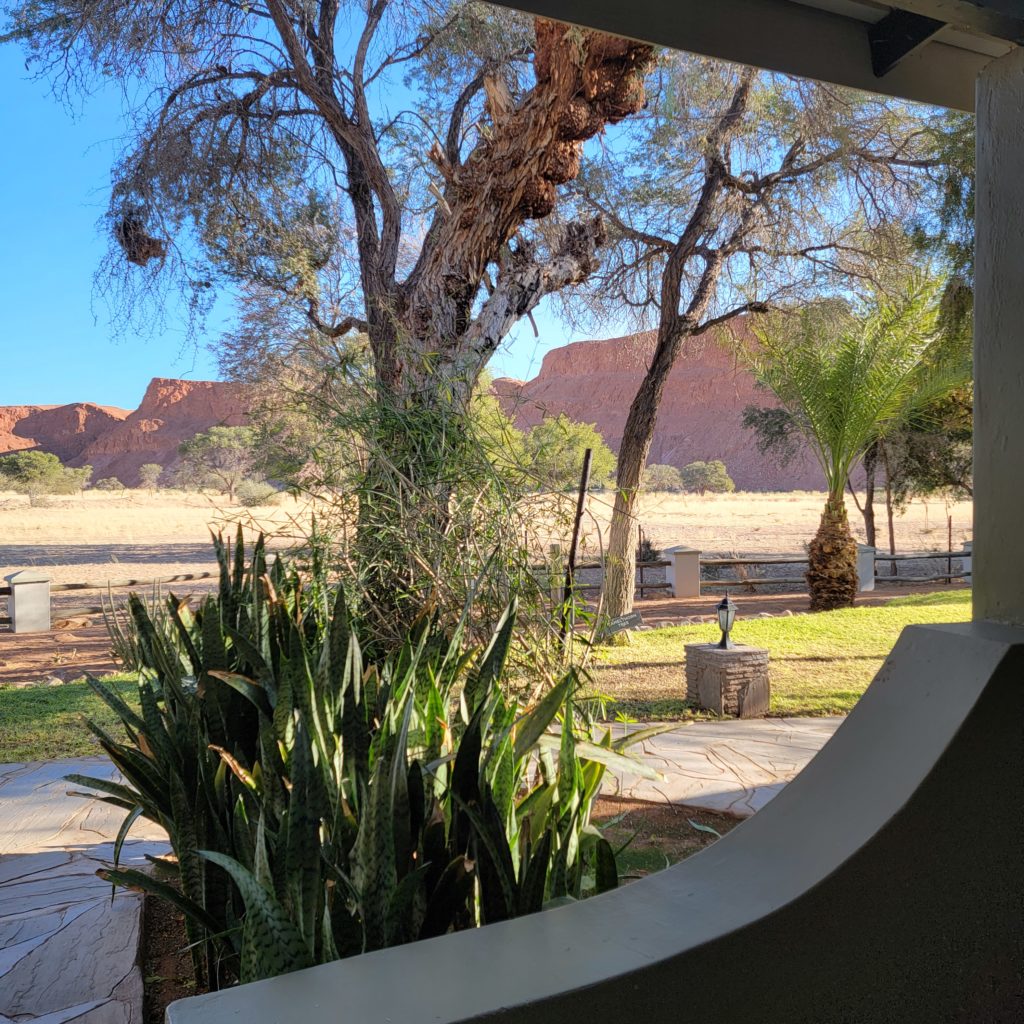
One of the trips that we booked through Discover Africa was a nine day self drive in Namibia. They arranged for the 4×4 vehicle (a Toyota diesel Fortuner) and stays at 4 hotels. All the hotels were nice resorts owned by the Gondwana Group. This would prove to be a good benefit when we wanted to change up the reservations a bit.
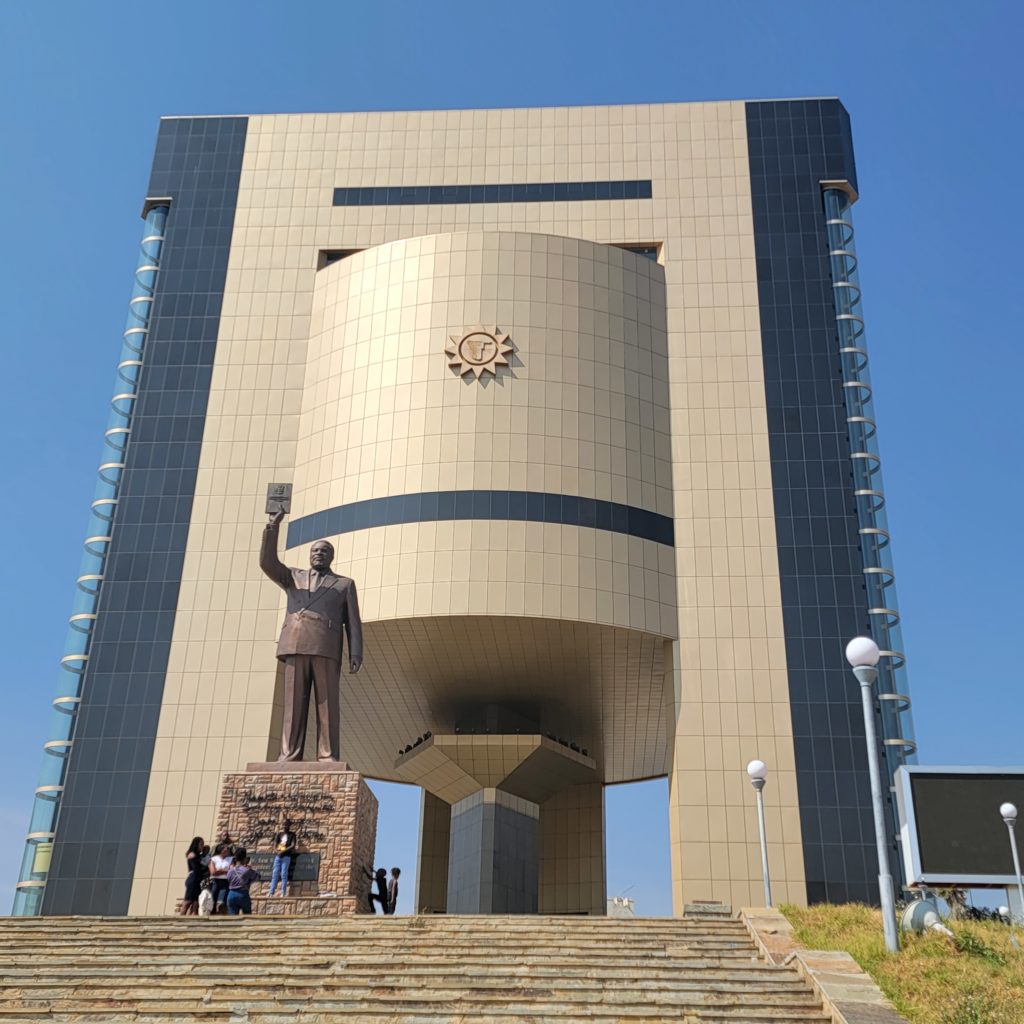
As we have done in all of our trips this summer, we flew into the town a few days early and gave ourselves some wiggle room in case there were issues with flights. We had a small guesthouse in Windhoek, the capital of Namibia. Early in the 20th Century Namibia was a German Colony. After the 1st World War it became a League of Nations administered territory. Following the 2nd World War, South Africa administered Namibia, until independence in 1990. We went to the Independence Museum one day in Windhoek but it was closed, and no one knew why.
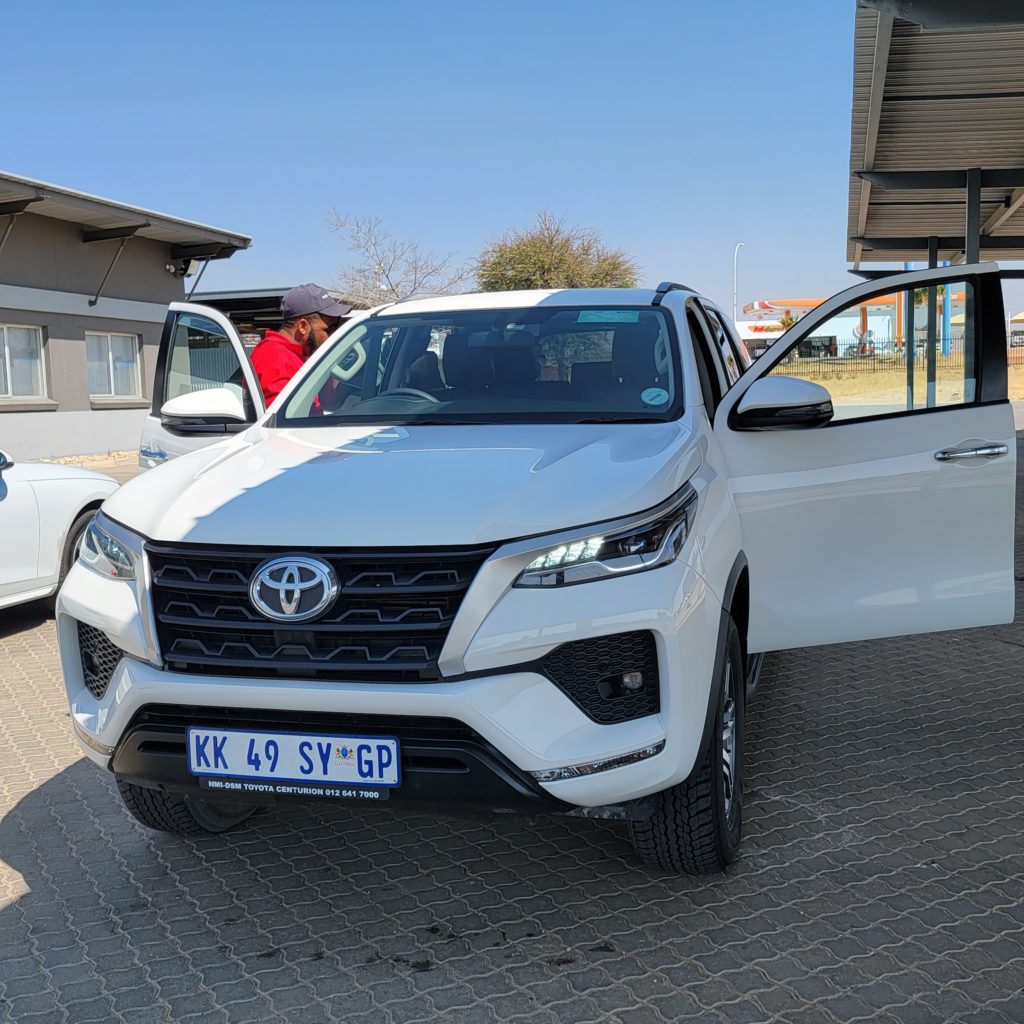
Windhoek was quite unremarkable and we didn’t really have much to explore there. On the day our official trip began we made our way to the airport to pick up our car. Avis in Namibia is no different than rental car companies everywhere else in the post-covid world. They didn’t have enough cars and we had to wait four hours until someone finally arrived in the afternoon and checked one in. The challenge was that we had to get to Etosha National Park that evening, which was 4.5 hours away. And driving at night here is dangerous, so we were quite anxious to finally get on the road.
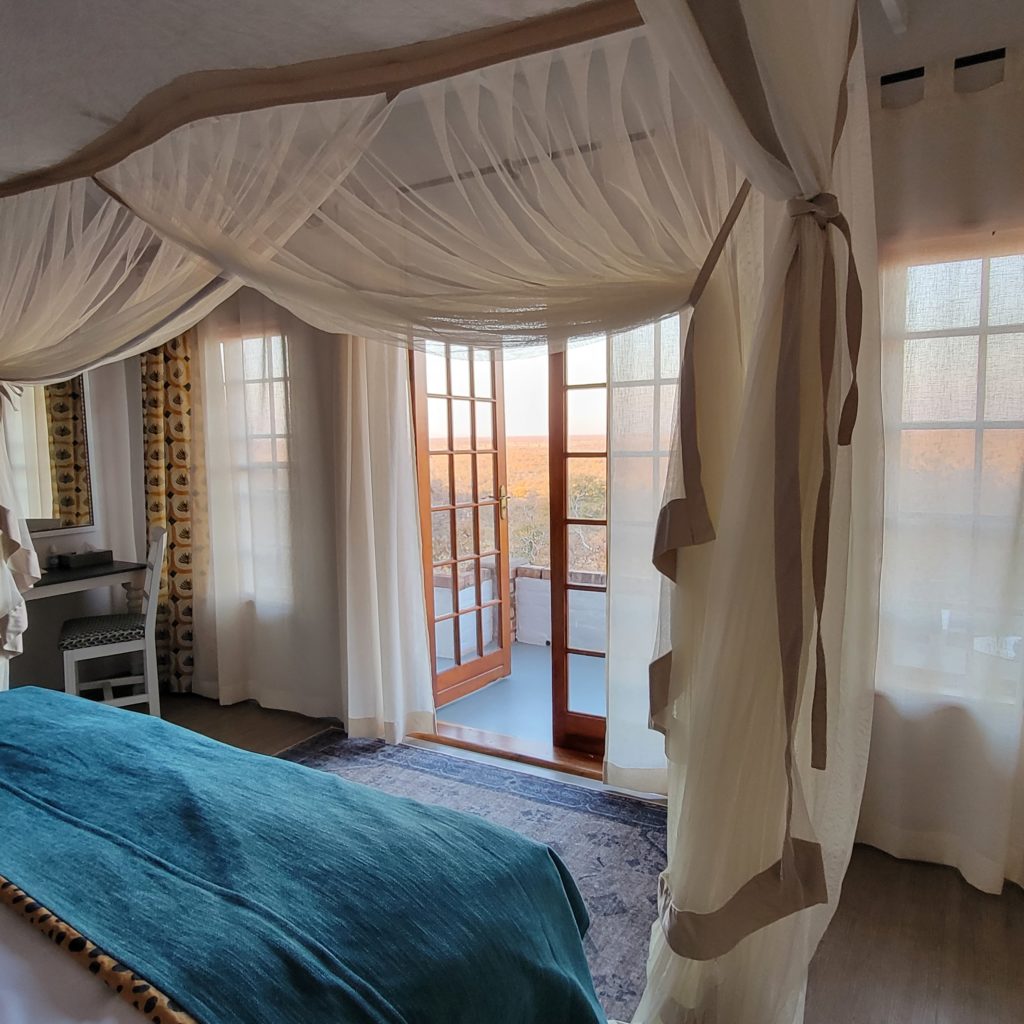
The lodge at Etosha was outside the park, and a beautiful spot. These weren’t tents like the Delta in Botswana, but 60 cabins on a hillside with walking paths and three swimming pools. The dining was outdoors and there was a nice platform to watch the spectacular African sunsets. The food was exceptional, which we have found to be the same at all the Gondwana locations.
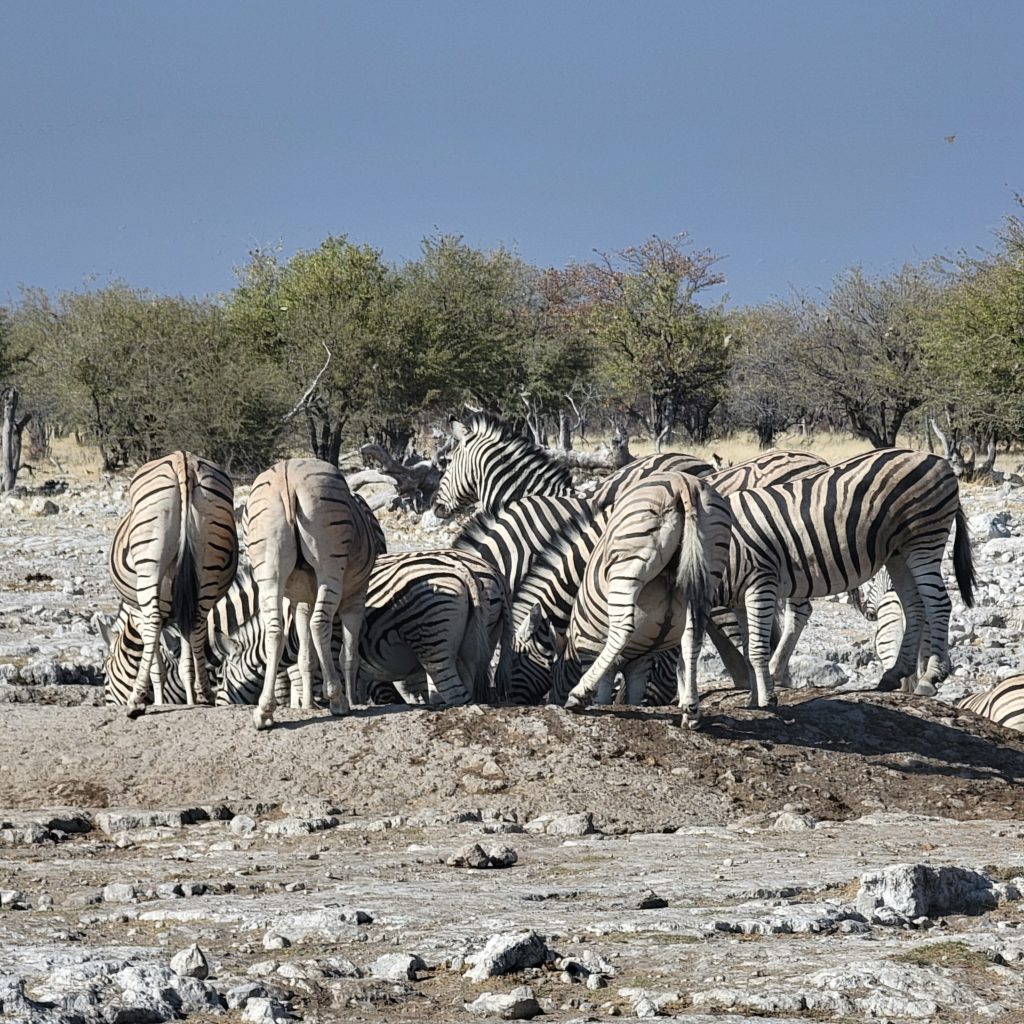
We took a full day game drive in Etosha National Park. We knew this would be much different than Botswana but were optimistic we would find the rhino we needed to complete the last of our photos of the Big 5. What we learned is that the Namibian government has completely fenced in the park in order to protect the Namibian farms. This creates issues with imbalances of herds and also water issues. The animals can’t go further for water and the park is in a draught like other places, so they have to supplement the watering holes with water pumped using solar power from wells (which they have to hide so the elephants don’t destroy them).
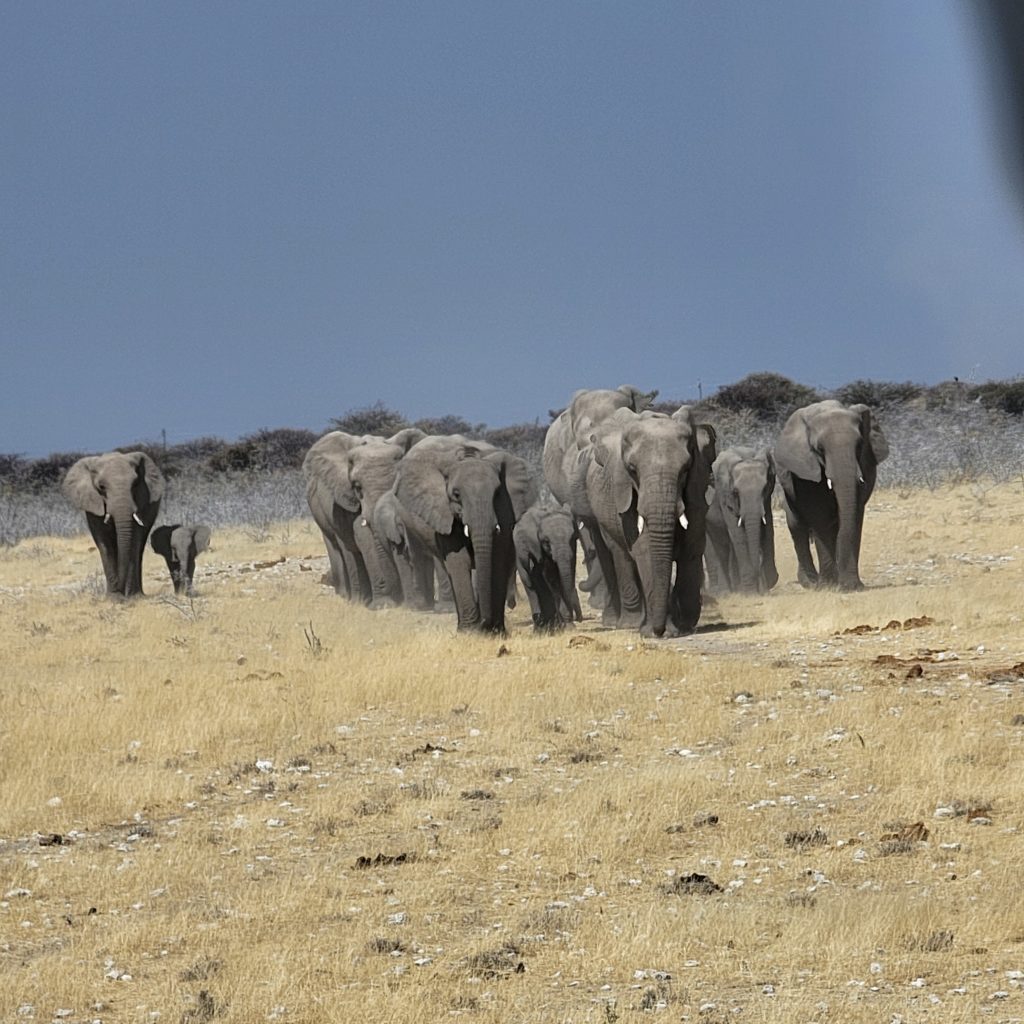
Occasionally the elephants break down the fence and wreak havoc in the farms and towns near the park. Apparently elephants LOVE watermelon, and farmers have to be very careful when harvesting since elephants have a very strong sense of smell. Our guide from Sossusvlei lives in a small town north of the park and told us about the problems. In order to get the elephants back into the park they use either jeeps or helicopters, depending on how big the herd is that escaped. When the big cats get out they try to tranquilize and return them, but occasionally the cat is enough of a problem they have to destroy it. That’s a sad thought, since African lions are now listed as “vulnerable” and studies suggesting they could be extinct by 2050.
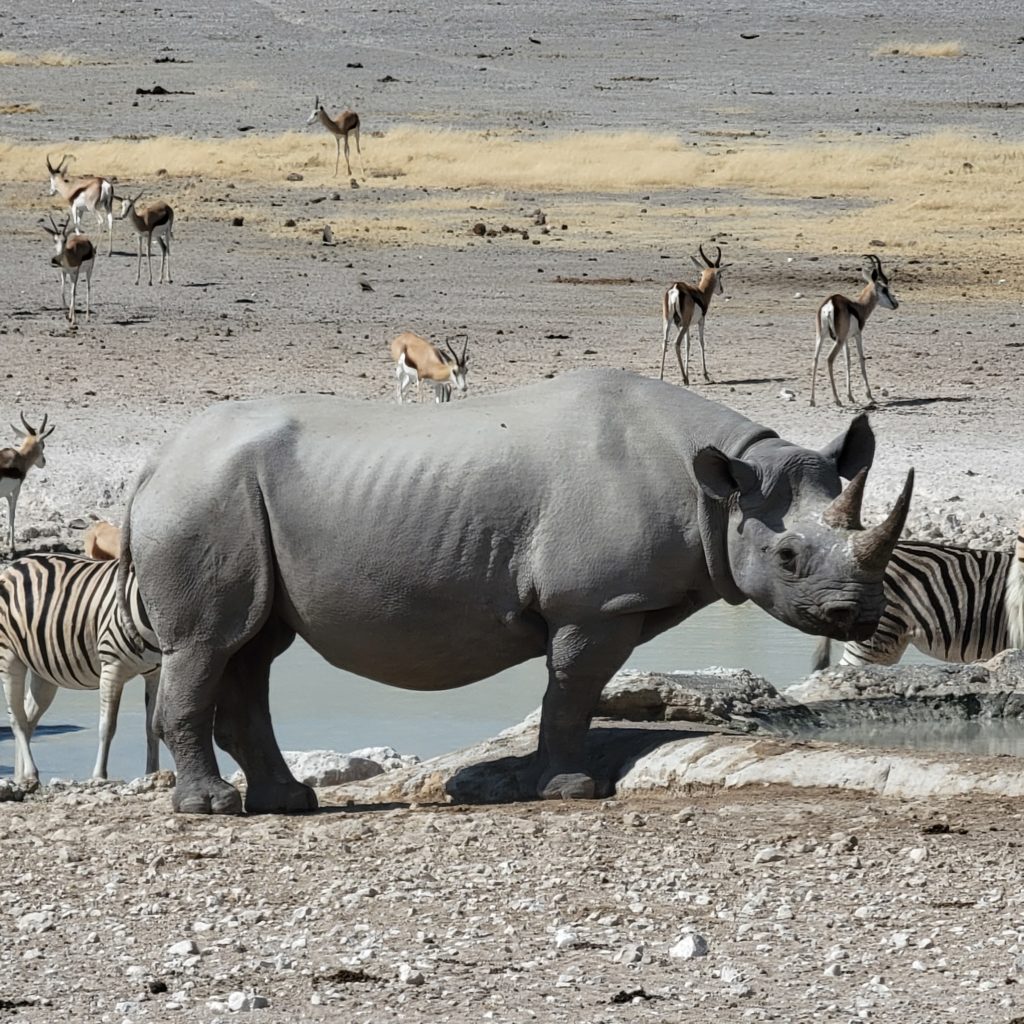
In the end we did see some new things in Etosha and did find the black rhino that completed our big 5. If it had been the only game park we were visiting we would have still been excited about all that we saw. And it was the beginning of a super fun adventure driving around the country.
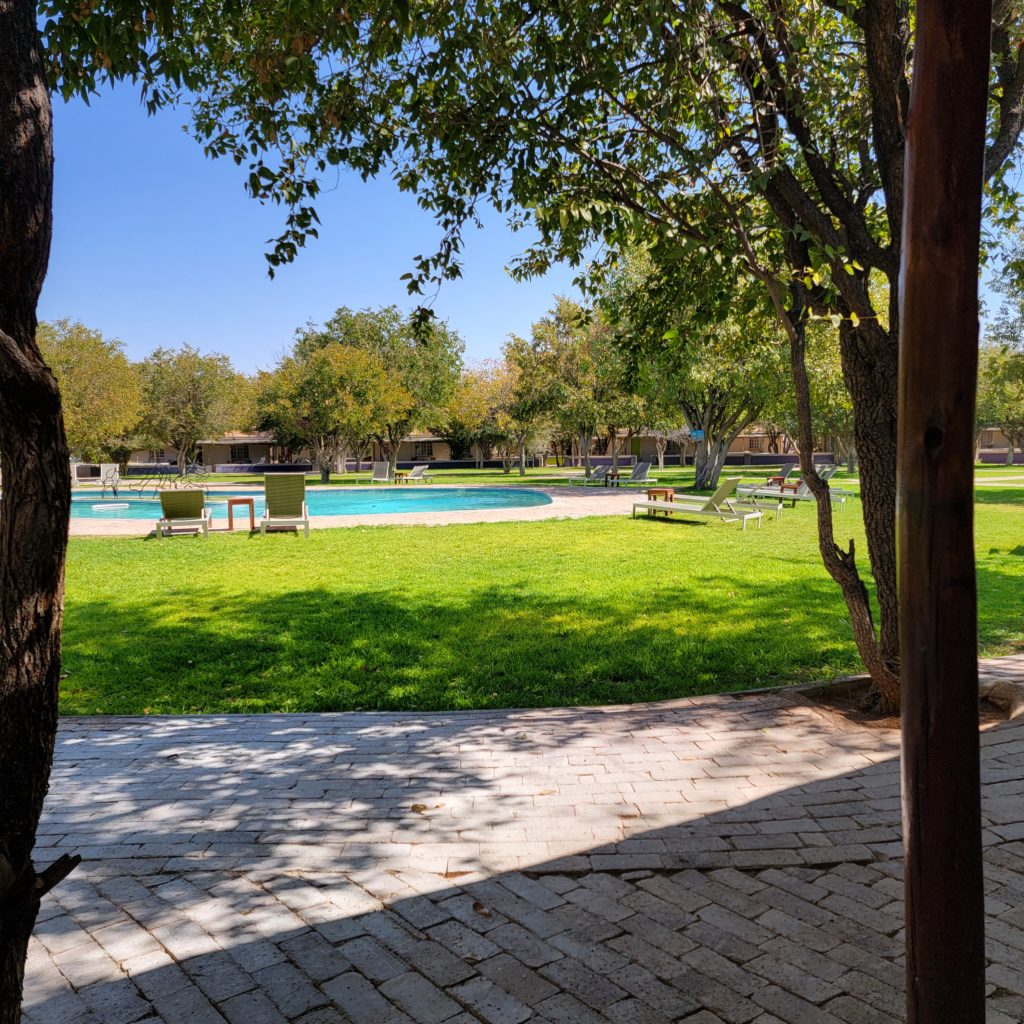
Our next stop was in the desert, in an area called Damaraland. It was another beautiful Gondwana resort, but there was nothing there for activities except walking in the hot desert and watching sunset from the viewing platform. The flies and bugs were thick, the heat was intense, and the pool was freezing cold. So I called our agent in Cape Town and we bailed on the second night there and headed out to the coast.
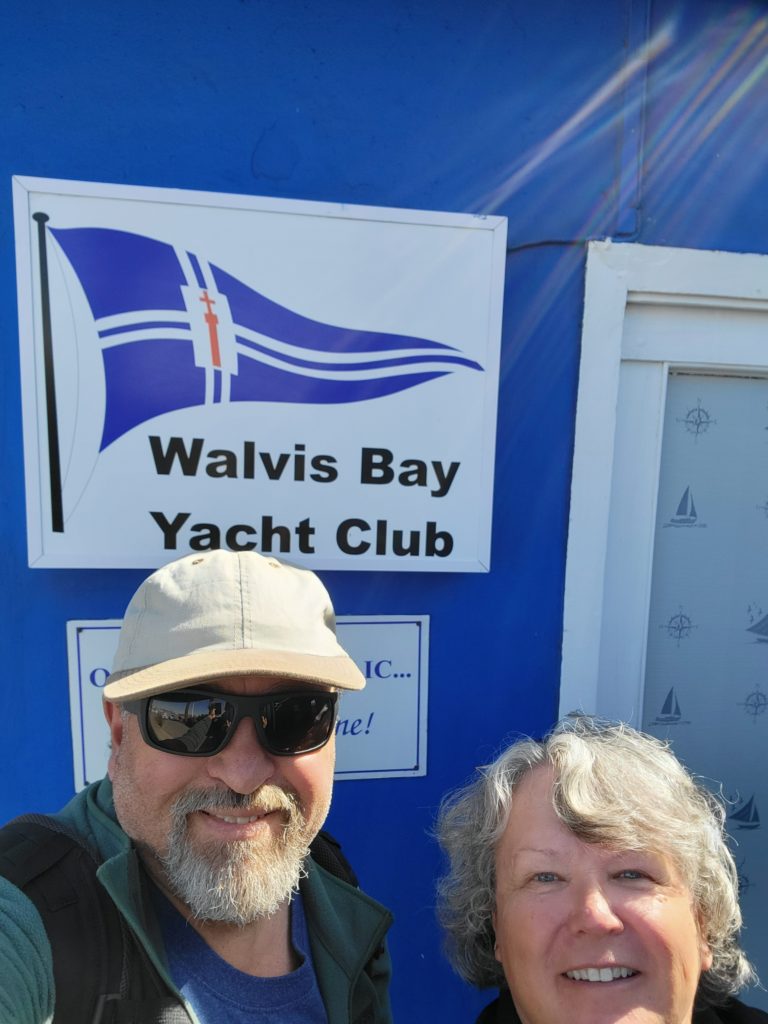
Our beach stop was in the town of Swakopmund (which means river mouth and is at the end of a now dry river bed). The temps dropped from high 80’s to low 60’s as we approached the coast. We stayed 3 days at a hotel in town and enjoyed some drives up and down the coast, including a visit to a local yacht club in Walvis Bay.
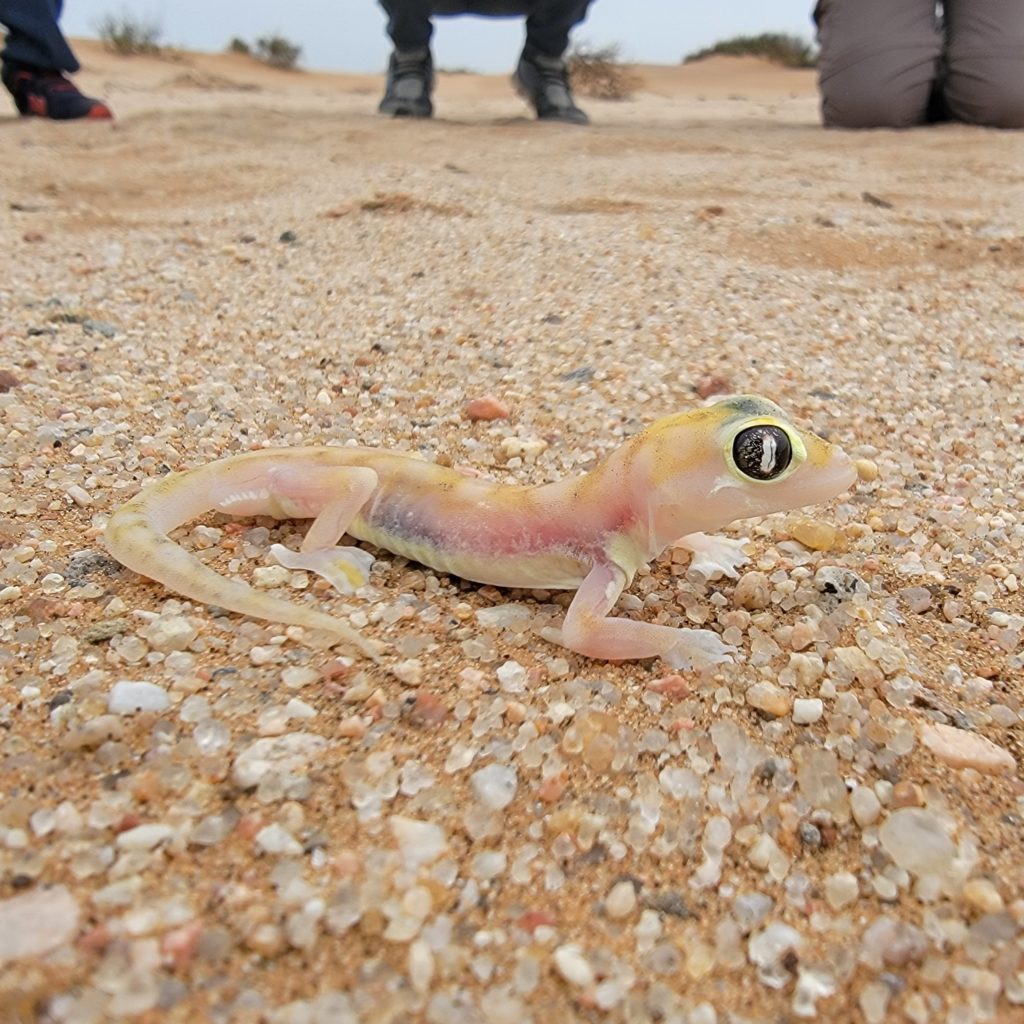
We also took a half day tour in the desert looking for what they called the “little 5”. We learned about desert geckos and vipers and legless lizards and chameleons. It was a super fun tour full of stuff that was all new to us.
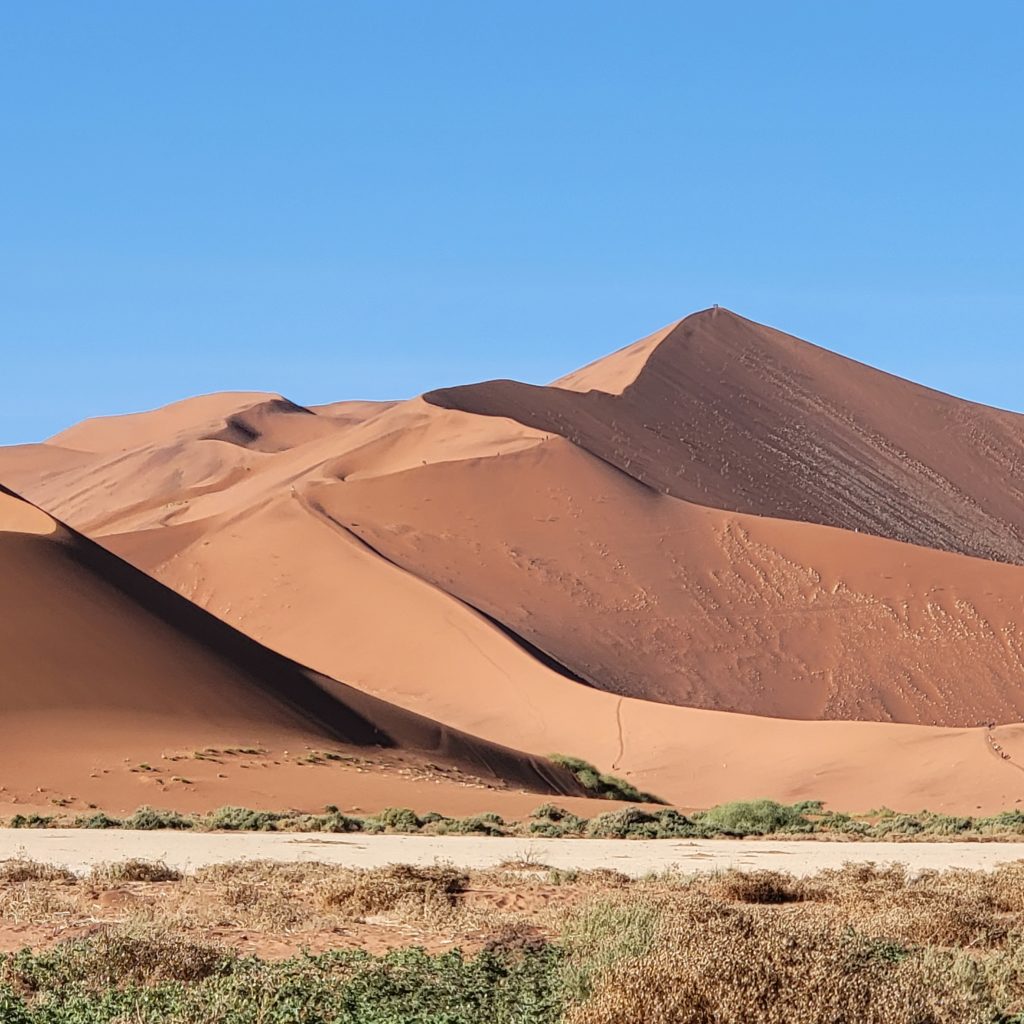
The last stop in Namibia was at the dunes in an area called Sossusvlei. The guide book says “Though its literal translation is dead-end marsh, visiting Sossusvlei is a sensational experience you should not miss if you plan to travel to Namibia. Situated in the heart of the oldest desert in the world: the Namib desert, this awe-inspiring place is famous worldwide for having the highest sand dunes”. And trust me, they are high. We were with a tour from the resort and went to the highest of the dunes, rightfully called “Big Daddy”.
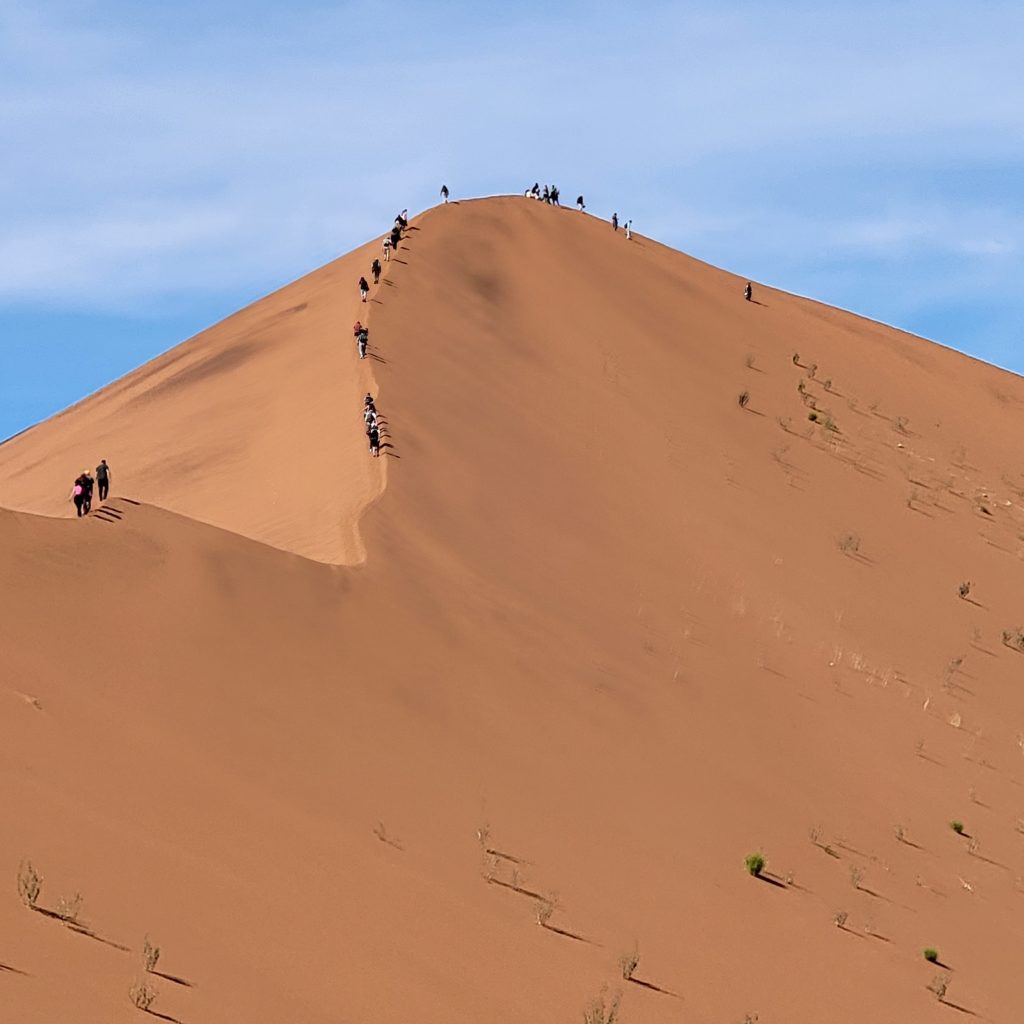
I took a screenshot of Polaris Navigation app at the very top, and at the bottom. We climbed up for probably 2 hours, and it took less than 15 minutes to get to the bottom going straight down the steep face. I originally posted the height at 1,800 feet, but my math was wrong and it was only 800 feet. Looking at the pix I don’t quite believe that, but the online docs also say it’s only 325 meters. We did great getting up in the soft sand, and down was easy and actually kinda fun. But then it was a 2 mile walk back to the truck and into soft sand uphill again at the end, and I finally got a little heat exhaustion. But luckily I didn’t sunburn and all in all it was amazing.
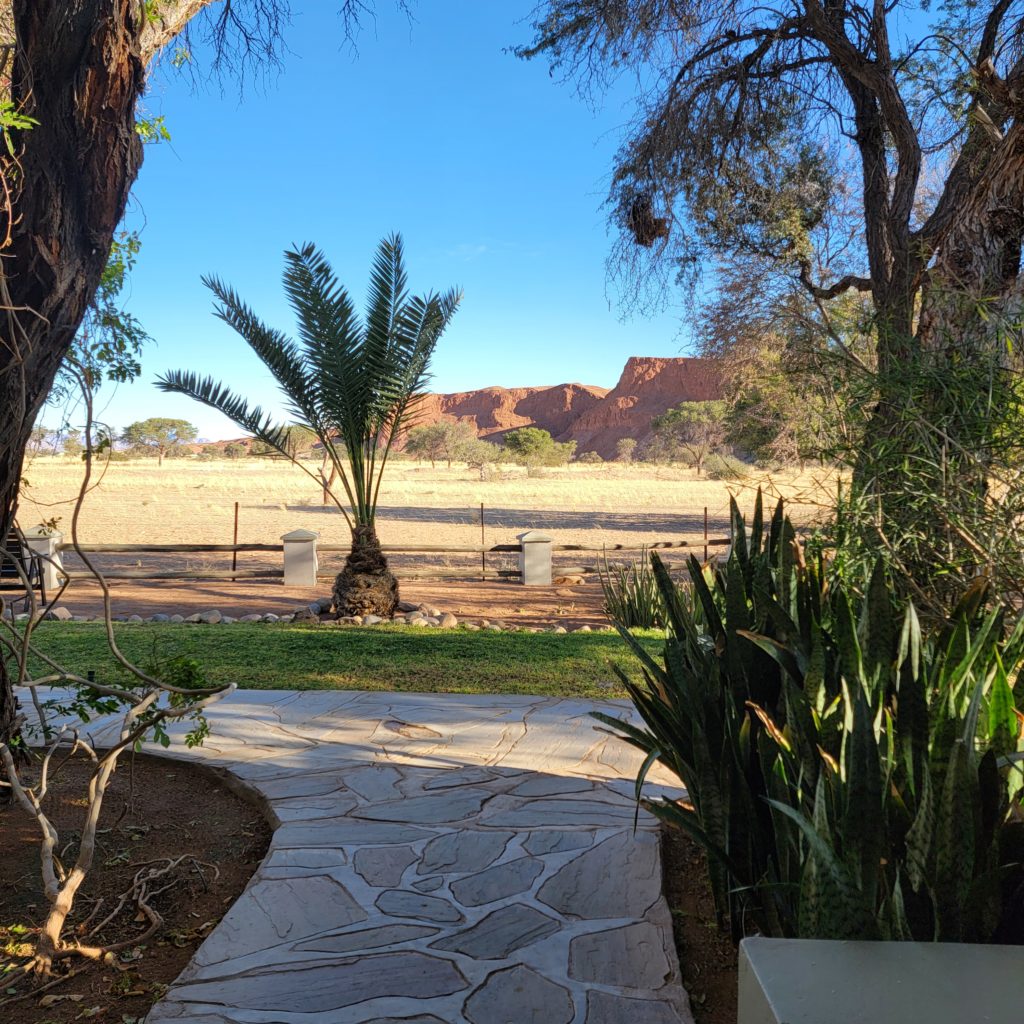
Too soon it was the last day and we had to get our truck back to Windhoek. The porters were waiting outside our room with a luggage cart and the sad bit of information that we had a massively flat tire. Of all the people we had talked to driving around Namibia, we were the only ones that hadn’t had a flat that week (there are lots of miles on gravel roads). Two young strong men at the lodge quickly replaced the tire with our spare, then took it into the tire shop for the resort and fixed it and refilled it. Because this resort is so remote and has so many vehicles, they have their own maintenance shop onsite.
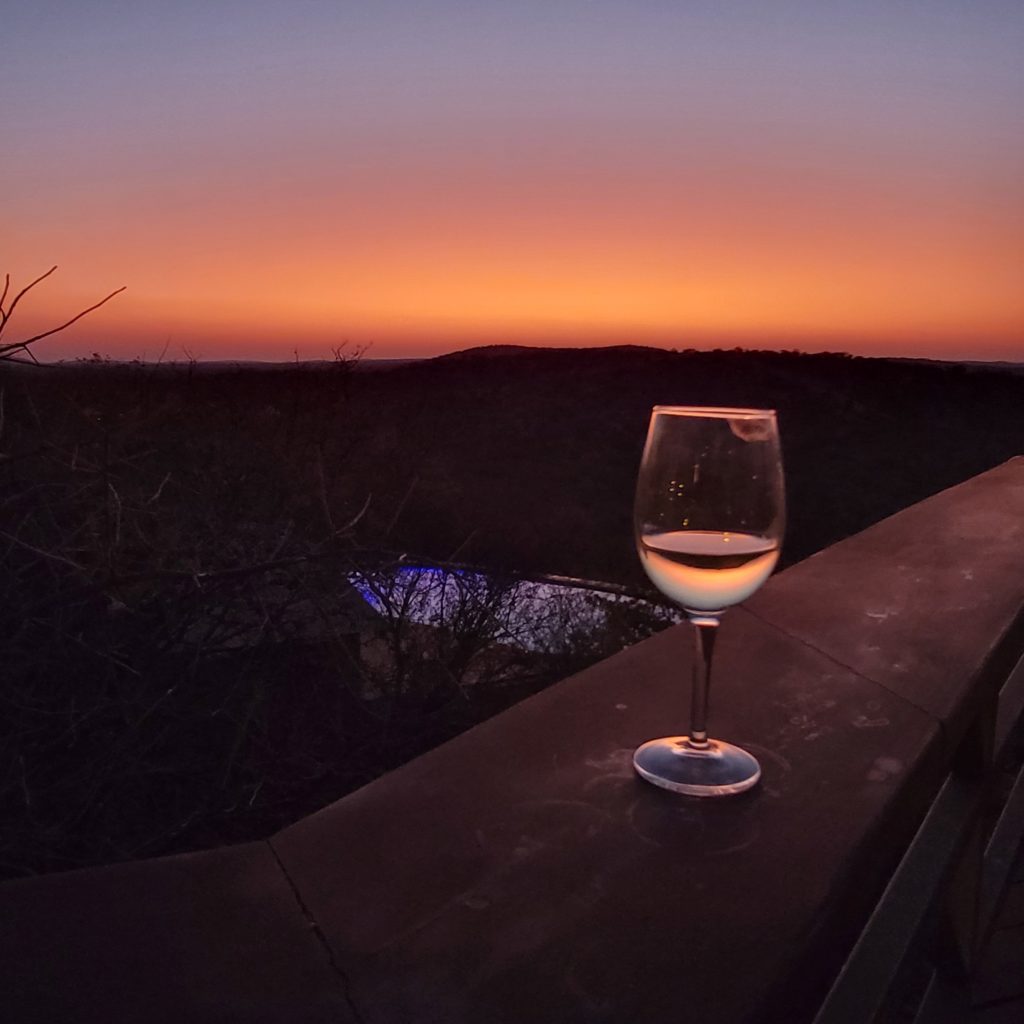
Namibia gave us even more than we had hoped for. Africa has so much more to offer than just photos of big (and small) animals. The people are amazing and warm and welcoming. And they’re all so grateful that Americans have started coming back to Africa. And we’re grateful we finally got the chance to experience all this.
Here are pix from the Namibia Album.